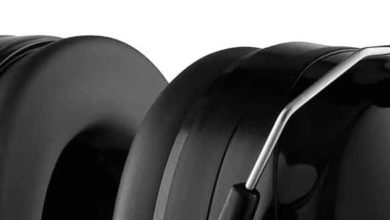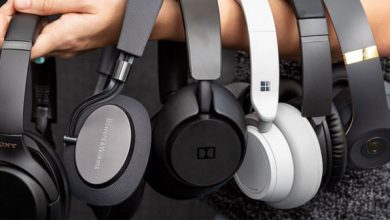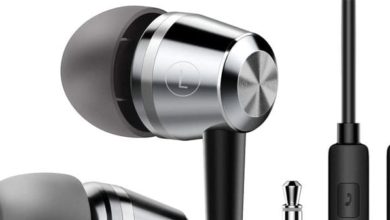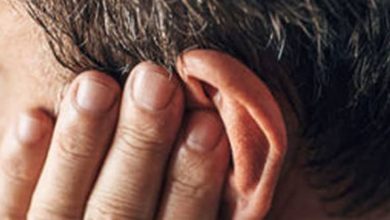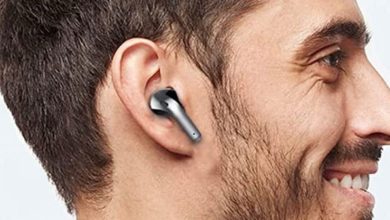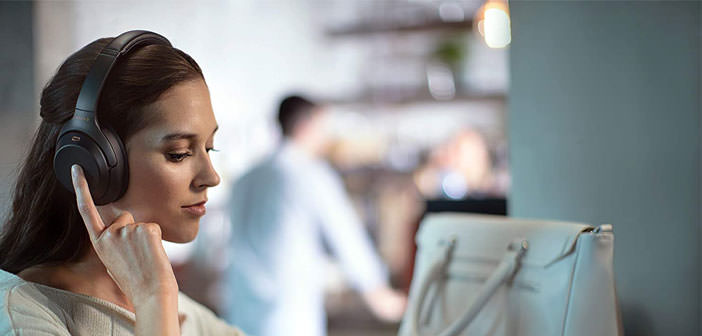
What’s the difference between headphones and earphones? In-Ear, On-Ear And Around-Ear Headphones?
Usually, those who enjoy audio or video content prefer to wear a pair of headphones or earphones. But what is the difference between these two devices?
While the earphones are inserted inside the ear canal, creating a plug effect, the headphones can rest on the ear or even wrap it, completely isolating the listener from external noise. In this article, we will explore the difference between headphones and earphones.
What’s the difference between headphones and earphones?
Earphones are familiarly called headphones. They are characterized by the fact that they can be positioned in the ear by slightly penetrating the ear canal. They are the devices preferred by sportsmen, especially those who love to jog listening to music.
The earphones are small in size and are easily transportable, even if they present a drawback: prolonged use can cause pain to the listener, precisely because they fit in the ear area between the tragus, the lower left part of the pavilion auricular, and the antitragus, which instead constitutes the lower-right part.
The other problem is the ease with which they come off because they are not secured to the ear by an anchoring system.
Open Headphones And Closed Headphones
The headphones can instead be closed or open. The differentiation derives from the degree of isolation they produce concerning external sound. The open ones are also called supra-aural, as they rest on the ear without completely isolating it.
Closed headphones are also called circum-aural headphones; they isolate more by offering the listener a totalizing experience. They are heavier than the open ones, and this characteristic affects the overall experience.
Closed headphones, also called external, are high-fidelity headphones and are highly appreciated by users of music listened to at home, when enjoying the sound experience comfortably seated, to perfectly perceive the purity of sound and all its components.
In general, headphones, and also the in-ear headphones, can allow stereo listening thanks to the presence of a double transducer, each characterized by a letter: the transducer marked with the letter L, which stands for left, is reserved for the left ear; the one marked by the letter R, which stands for right, must be applied on the right ear, in the following article, for those interested, we explain why the headphones have the right and the left.
What is the difference between in-ear, on-ear, and around-ear headphones?
In-ear headphones are also called in-ear headphones. This model of headphones was born as a professional device; musicians were used during concerts, but over time, they were put on the market, becoming a consumer product.
The in-ear headphones are applied to the ear canal, at least in the most external part, and protected by a silicone or memory foam sheath. It is important to pay attention to the coating quality because it is one of the characteristics that distinguishes a product of modest quality from one of the top levels.
The very inexpensive earphones have a rubber coating that does not perfectly fit the ear canal’s shape; this is affected by sound insulation and the quality of listening; those who listen to music feel the need to reposition the headphones, which tend to slip continually.
What Are In-Ear Headphones?
The in-ear headphones with a silicone sheath are perfectly insulating because they function as a cap, not letting any sound coming from the outside filter. Listening is satisfactory since complete isolation creates a pressure that is conveyed towards the eardrum without causing dispersion.
The result is quality listening, even with a not particularly high-volume level and in rather noisy contexts. The drawback is a prolonged solicitation of the eardrum, which in the long run strains listening. For this reason, it is recommended to use it sparingly.
What are On-Ear Headphones?
The on-ear headphones are characterized by two pavilions inside which the speakers are placed; through passive soundproofing, these devices partially reject external noise. The problem associated with this type of headphones is the pressure of the padding on the ear, after prolonged listening, can cause pain.
On the other hand, the advantage is the quality use of the audio content. They are characterized by the sound’s intensity, which inevitably comes ” wider ” than that produced by the earphones. The on-ear headphones cannot completely isolate the listener; they allow ” external ” sound to reach the ear.
In some way, they are negatively affecting the quality of listening compared to closed headphones, which represent the absolute best option. Some models of on-ear headphones have a system for excluding background sounds from the external environment to improve performance.
On-ear headphones are practical because they are compact and have the characteristic of being small in size to be easily transported. There are also folding models on the market that take up very little space.
What are Around-Ear Headphones?
Around-ear headphones instead have padding that surrounds the ear; for this reason, they are also called ” closed headphones. ” Thanks to their enveloping shape, the listener does not feel the typical pressure of on-ear headphones, which over time, can cause some discomfort.
The advantage is expressed in the possibility of even prolonged listening. There is to consider that these headphones weigh just under 500 grams, so prolonged use can be particularly tiring for the listener who wears them.
In any case, it is precisely the soundproofing of the added value of this kind of device, which perfectly isolates from the outside world and makes music an experience very different from that listened to in other ways.
Closed headphones are particularly effective with low-frequency sound because the transducers are larger and are often housed in a small, small speaker cabinet.
There is certainly the technology used to build them to affect the quality of sound and that of external or around-ear headphones. Just take as an example the presence of magneto dynamic speakers, which are completely similar, even if on a smaller scale, to those used in audio speakers.
On the other hand, the closed electrostatic headphone is equipped with a preamplifier that houses a power-supply circuit necessary to supply auxiliary voltage; all this translates into a linear frequency and a higher cost of headphones, to the advantage of the overall sound quality.
By connecting these sophisticated and very delicate audio devices to a good level amplifier, the listener will benefit greatly as the around-ear headphones with preamplifier exploit a particular electrical signal that only the amplifier of a Hi-Fi stereo can guarantee. The yield will instead be lower if you are using an MP3 player or a smartphone.
How do I wear in-ear headphones?
The in-ear headphones penetrate the ear canal, but to wear them perfectly and enjoy the benefits inherent in this model, it is necessary to follow a series of indications. If the quality of the headphones is not optimal, the rubber pads supplied may not be enough.
It will be necessary to purchase rubber pads that adapt to the size of the ear. This measure allows you not to lose the earphones while listening due to sudden movements.
To wear them correctly, tilt the headset aligning it with the ear canal; once inserted, it will be necessary to press lightly to adapt to the available space and produce the cork effect, the insulation from the noise of the external environment.

